With the post bus from Martina to Samnaun
On the road with postbus driver Mario Heis
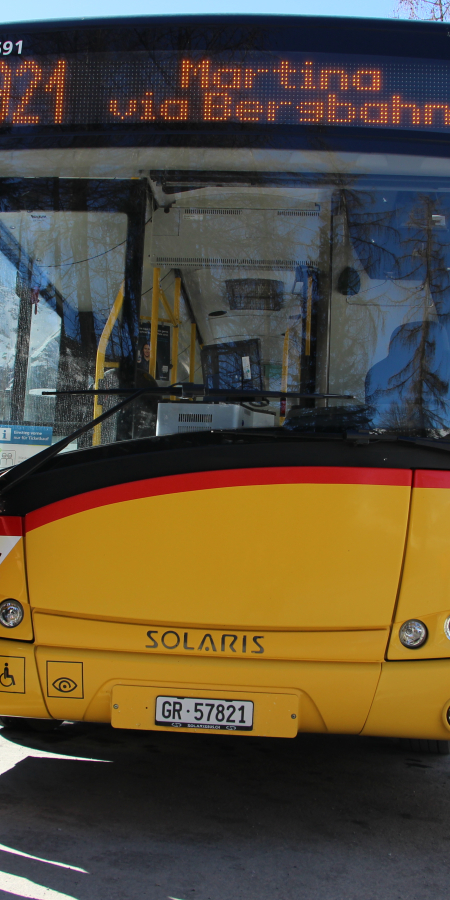
Traveling here with the PostBus was a very special challenge. Hardly anyone mastered it as well as Mario Heis. Since December 2022, all PostBus routes have been using the equally challenging access road via Austria, which, however, has no narrow, single-lane tunnels.
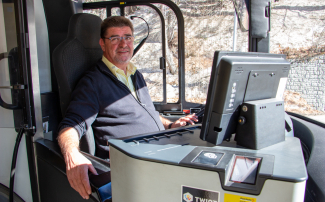
Mario Heis takes us on one of his last journeys on the route from Samnaun to Martina. He sits relaxed in the driver's cab of his Postbus and talks about his time as a Postbus driver. He has made a good 20,000 guest journeys on the Samnaun road. That's why he knows every curve and knows exactly how to circulate through the narrow, single-lane and barely lit tunnels and galleries. A matter of a few centimeters.

Without jerks, without scratches
Some passengers might have the feeling that no post bus would fit through here. But Mario steers his vehicle swiftly into the dark entrance. The rock wall comes threateningly close, then he slows down, steers into the curve and immediately accelerates again, as if he were driving a small car. The mail van drives through the narrow tunnel as if from a Gus, without jerks or scratches.
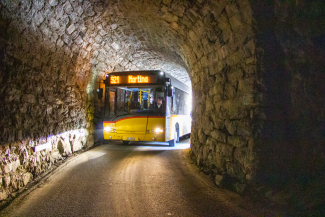
"I memorized markings and structures on the tunnel wall to hit the turn-in points," the experienced Postbus driver explains to us. Nevertheless: the tunnels between Vinadi and Samnaun and also some narrow sections in the villages remain a challenge even with 30 years of experience. "The important thing is to always stay on task and not get nervous if the timing is not optimal at times."
Just do not get nervous
He still got through, but he also touched the wall with the rearview mirror or the rear. Speaking of rearview mirrors: these were specially modified for the postbuses that ran on the Samnaun road in order to gain a few more centimeters of space. In addition, the vehicle design is smaller than that of the usual Postbuses.
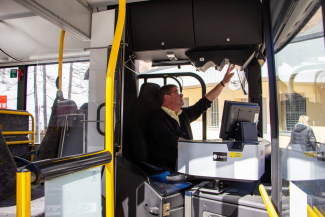
Driving a postbus here, is a nice job.
Mario Heis
Mario Heis is a true Samnauner. He grew up in the valley and has lived here all his life. Only for his apprenticeship as a car mechanic did he go away for a few years. "I like nature and the spectacular landscape. Being able to drive a postbus here is a nice job." He started out as a chauffeur for the local and ski buses, and has been driving on the Samnaun road since 1993. He still remembers his maiden voyage well: "My knees were shaking because I didn't know whether I would make it through the tunnels. But I didn't let on."
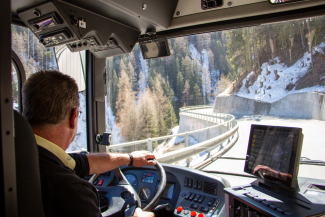
Steep flanks and wild ravines
Anyone who knows the road can well understand Mario's excitement at the time. It winds along steep mountain sides, while the Schergenbach gurgles in the abyss. The dreaded tunnels and galleries are located where wild ravines cut through the slopes. In winter, mighty avalanches thunder down into the valley. Most of them are triggered artificially with the help of blasting pylons and, if necessary, also by helicopter.
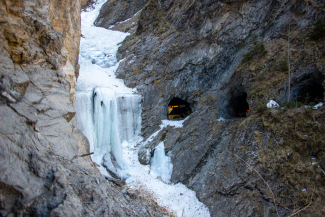
Safety thanks to 30 blast masts
The road has to be closed occasionally in order to carry out the avalanche blasting and clear the snow. Usually the road is only closed for a few hours, sometimes for a whole day. In the past, it was sometimes closed for four or five days, Mario recalls. The situation has been remedied by around 30 blast pylons. These can be operated by remote control and even in poor visibility conditions, which has made the Samnaun road much safer.
With the new tunnels a piece of history is lost.
Mario Heis
But Samnaun is rarely completely cut off from the world. On the opposite side of the valley there is a second road that is less exposed. There, the mountain flanks are flatter and less high, and the danger of avalanches and rockfalls is correspondingly lower. However, the Spisserstrasse lies on Austrian soil.
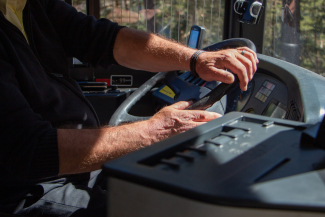
New tunnels are under construction
In the future, travel on the Swiss side will also be smoother, as construction is underway on new, two-lane tunnels that are well lit. The two lower tunnels are already in operation, and the third is under construction. A breakthrough was made in the fall of 2022; if all goes according to plan, the structure could be operational in the summer of 2024. And the replacement of the last two single-lane tunnels is already being planned.
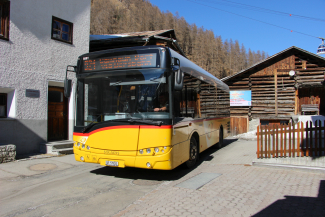
As a postbus driver, Mario will no longer drive the completed road, because he will retire in spring 2023 and can devote more time to his hobby, fire painting. On the one hand, he thinks it's good and right that the old tunnels are being decommissioned, but on the other hand he also regrets it: "After that, the road will no longer be the same, and a piece of history and the romance will be lost.
Once built for horse carriages
The Samnaun road went into operation in 1912, during a time when driving cars was prohibited by law in the canton of Graubünden. The ban on motorized vehicles was not lifted until 1925. The road and its tunnels were therefore designed for horse-drawn carriages and wagons, and not for cars and certainly not for post buses.
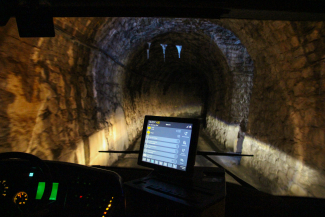
Duty free statute since 1892
Before the construction of the spectacular road, Samnaun was only accessible via Austria. This was also the reason why the remote valley community at the easternmost tip of Switzerland had been granted the duty-free statute in 1892: anyone living in Samnaun had no access to the Swiss domestic market and had to pay duty on every good at the border. With the construction of the road, this disadvantage fell away, but Samnaun has remained duty-free to this day.
The road was also an important attraction of Samnaun.
Mario Heis
Shopping in a duty-free paradise and skiing in one of the best and largest ski arenas in the Alps: that's what Samnaun is known for. But some guests also came here especially for the spectacular post bus ride. Mario liked to entertain his passengers with a quip as he passed through the narrow tunnels. This made the rides a special and unforgettable experience.

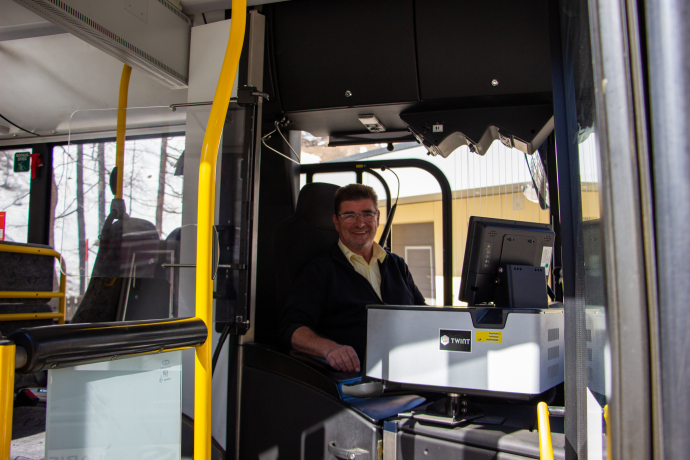
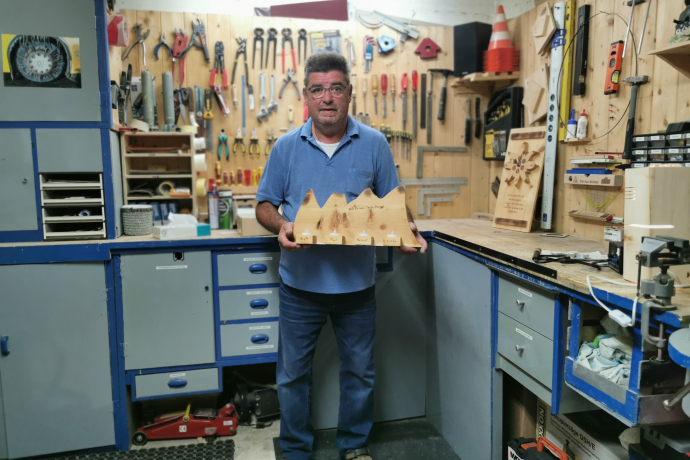
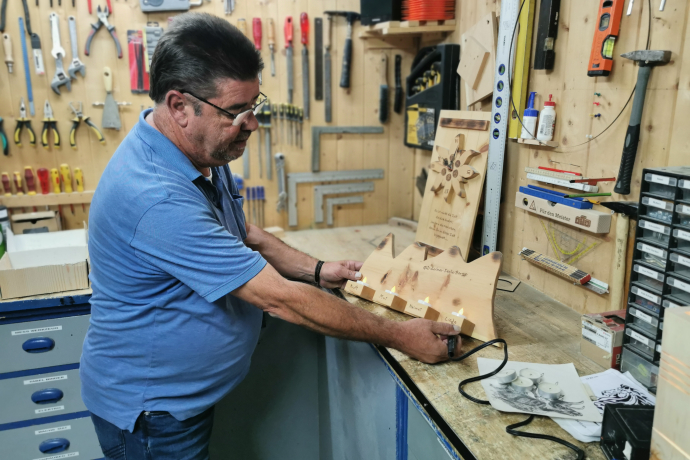
5 Bilder anzeigen
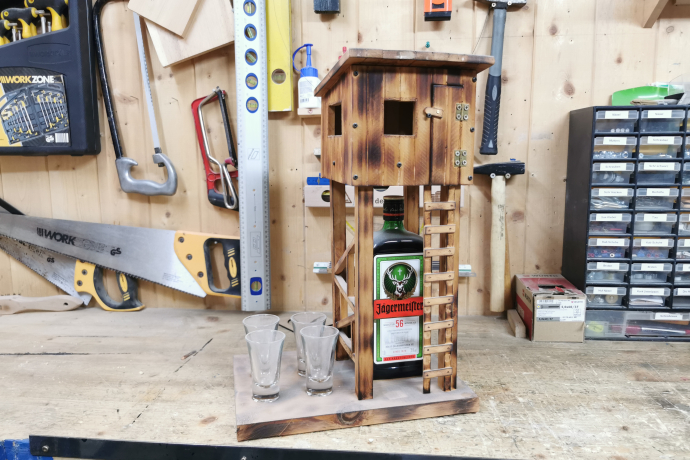
Text: Franco Furger
Pictures: Michelle Zbinden & Jasmin Jenal